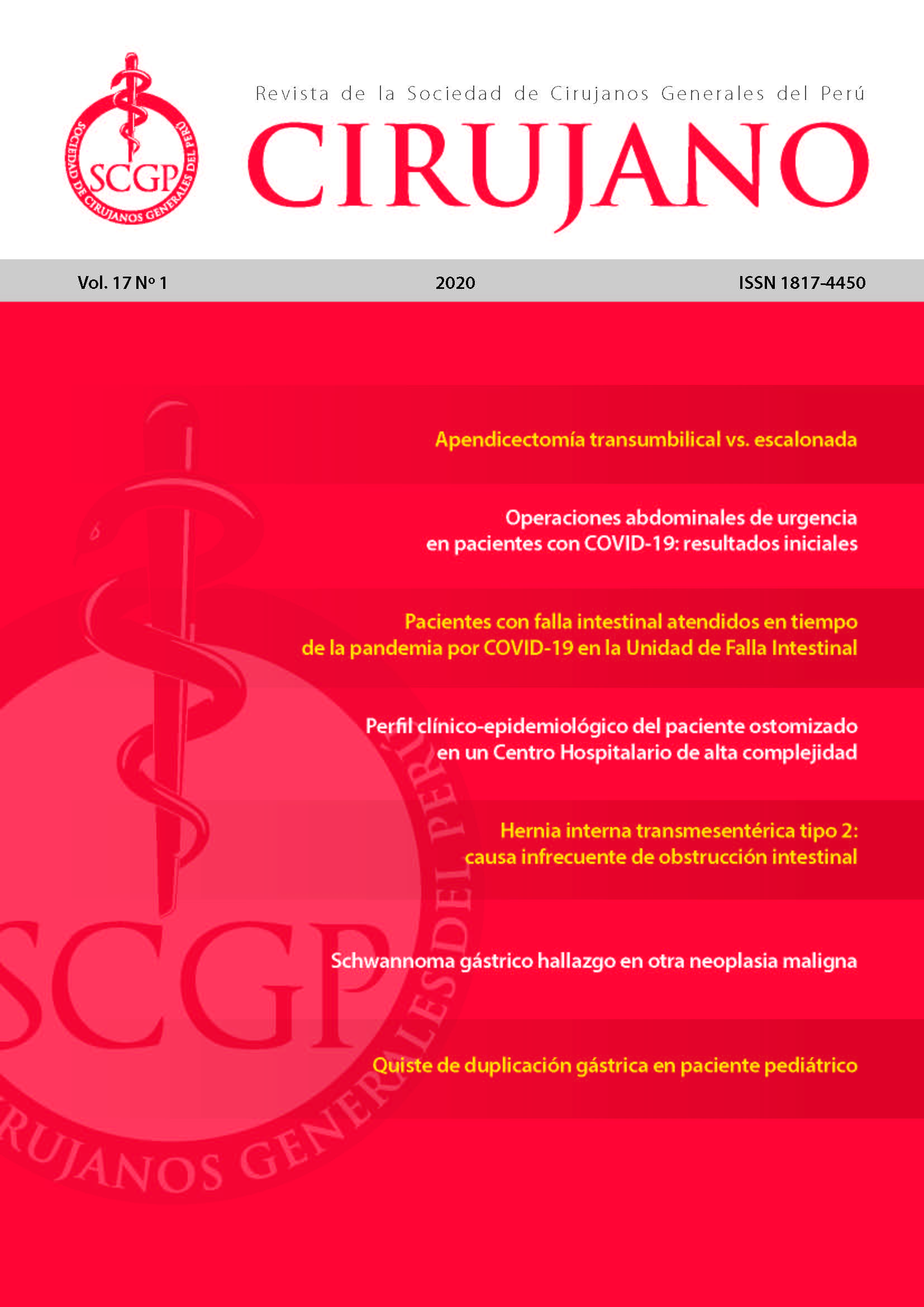Operaciones abdominales de urgencia en pacientes con COVID-19: resultados iniciales
Keywords:
Abdominal operations, urgency, covid-19Abstract
In Peru, the first diagnosed case of COVID-19 was on March 6, 2020, and the national sanitary emergency was declared on March 16, 2020. This meant changes in surgical treatment, elective surgeries were cancelled or postponed and only emergency surgical procedures could be performed. The Emergency Surgery Service of the “Guillermo Almenara” National Hospital in the city of Lima in Peru, has continued to perform emergency surgical procedures in this new scenario, following national and international guidelines and recommendations for management of patients with COVID-19. There are few studies and with low level of evidence, on the evolution of surgical patients with COVID-19, operated on urgently, however, the initial ones indicate a high morbidity and mortality of patients in both emergency and elective surgeries, therefore Scientific Associations recommend non-operative management. We proposed a study in surgical patients with COVID-19, operated on in an emergency, in order to observe the postoperative evolution. A descriptive study was performed in a series of emergency operated cases during the months of April and May 2020, in adult patients of both sexes with a diagnosis confirmed by serological test for SARS-Cov-2 infection or chest tomography without contrast with a report of COVID-19 lung lesions. The recording of patient variables was carried out using a specially designed card in which, epidemiological data, APACHE II score, pre-surgical, operative and hospitalization time were recorded; in addition to the type of pathology and surgical procedures performed, complications and the grade according to the Dindo-Clavien Classification were registered. Out of a total of 9 patients, 7 males and 2 females, aged between 17 and 82 years, the APACHE II score on average was 7.6; the mean preoperative time was 6.0 hours, the mean operative time was 117.7 minutes, and the mean hospital stay was 7.8 days. three appendectomies, 2 cholecystectomies, 2 right hemicolectomies with primary anastomosis and one laparotomy with surgical repair for complicated hernia were performed. Three postoperative surgical complications ocurred: one surgical site infection and two early bile leaks or fistulas. We conclude that the epidemiological characteristics of emergency surgical patients with COVID-19 are similar to those of the general population. That pre-operative, operative and hospitalization times were greater than the estimated averages for emergency surgical procedures and pathologies and, finally, that the post-operative complications were proportionally higher for surgical pathologies.
Downloads
Metrics
Downloads
Published
How to Cite
Issue
Section
License
Copyright (c) 2023 Huamán Egoávil, Eduardo, Zegarra Cavani, Sergio, Terry Castellanos, Luis, Gonzales León, Luis, Yepez Adrianzén, Raúl

This work is licensed under a Creative Commons Attribution 4.0 International License.









